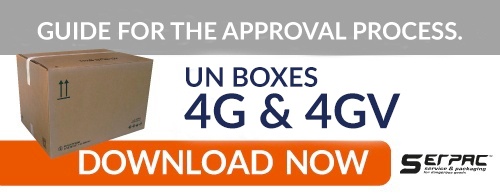4 things you need to know about transporting lithium batteries

Transporting lithium batteries is an operation that requires particular attention and knowledge of the relevant regulations. This even more so after recent accidents have highlighted the danger of this product, which is widely used in consumer electronics.
Lithium batteries are, in fact, used in laptops, smartphones and even for electric cars. Not everyone knows, however, that lithium is a highly flammable material, and becomes even more dangerous if used for purposes other than that for which it has been designed, e.g. recharging a device
Le batterie al litio sono, infatti, utilizzate per laptop, smartphone e anche per le auto elettriche. Non tutti sanno, però, che il litio è un materiale altamente infiammabile, e diventa ancor più pericoloso se utilizzato per fini diversi rispetto a quello per cui viene impiegato: ricaricare un dispositivo.
Do you know how to prepare your packaging in compliance with regulations?
Find out how by downloading our guide on UN 4G and 4GV boxes for free!
How do you make sure your electronic devices are shipped correctly? Bellow are four key points which you need to be aware of and constantly updated on.
Knowing and complying with the regulations for the transport of dangerous goods
The UN, following analogous recommendations, drew up a list of dangerous goods for transport purposes. These include lithium batteries. In particular, the International Air Transport Association (IATA) regulates the transport of lithium batteries by air. IATA regulations have become increasingly more stringent over the years, which is why airlines also see themselves having to comply with mandatory rules and restrictions.
The transport of dangerous goods can also be done by road, rail, inland waterway and sea. Each of these modes of transport has its own features, which the consignor must know and adhere to. For compliant shipping, it is necessary to follow the directions defined in the reference models which contain all the relevant information and instructions. Models are updated every two years, with the exception of IATA, which is updated each year (or to add any amendments that go to supplement the current legislation).
Choose the appropriate boxes and packaging.
Lithium batteries must be placed within specific packaging, except in some specific circumstances. UN 4G certified boxes are an example of this type packaging. They must be used in combination with their specific internal packagings.
Be sure to have the certificate of approval, proof that the packaging has undergone the UN certification process which states that the packaging is suitable for shipping your lithium battery. It is also recommended that you note the weight of the box, which must be equal to or lower than that of the package tested in the approval process. The sender can find the instructions on how to close the box correctly on the flaps of the box.
Lithium batteries can be packaged and shipped individually, or packaged individually but shipped with other devices in the same box. The type of classification varies depending on whether the battery is on it own, or contained within an electronic device or shipped together with an electronic device, such as a smartphone or tablet. Lithium batteries on the market are of two types, rechargeable (lithium-ion), and non-rechargeable (lithiummetal). The classification is different depending on whether they are sent individually or packaged/contained in a device,
Use custom labels for dangerous goods
After having properly isolated and packed the lithium batteries or the device(s) containing them, it is necessary to label it, and so indicate the presence of dangerous goods to those who carry out the transport process. It is also necessary to indicate whether they are lithium-metal or lithium-ion batteries. This specification is made by indicating the UN number on the packaging, and, when required by the mode of transport, the name of the goods too.
Always check that the batteries are not faulty
Last but not least, it is essential to make sure that lithium batteries are not defective or damaged in any way, given the high degree of danger involved.
To avoid the shipment not being accepted due to damaged material, it is important that those involved in the logistics of the shipment are scrupulous and make all the necessary checks, so as not to upset all the work that precedes the transport operation. A good strategy to adopt would be to prepare a procedure with all the steps to be followed when sending lithium batteries. In this way an efficient and effective service can be guaranteed.
